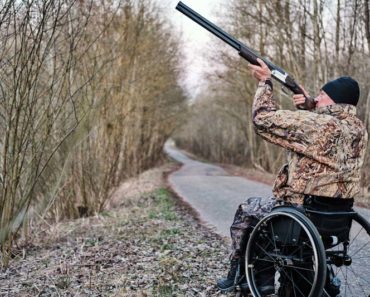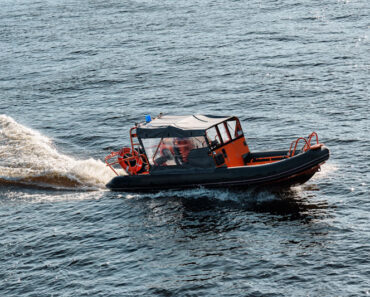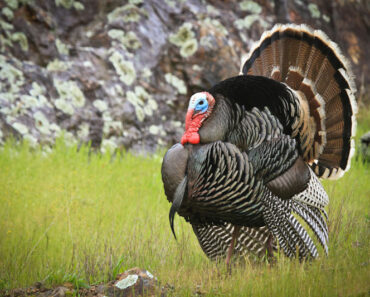Hunting dogs are unique animals. They are considered working dog breeds and must exhibit special characteristics and traits.
The North American Versatile Hunting Dog Association (NAVHDA) recognizes 30 different breeds of hunting dogs that meet their criteria. Each is different in the way they look and in the style of hunting they perform – as well as the animals they are best suited to hunt, point, and retrieve.
According to the NAVHDA, a versatile hunting breed is bred and trained to dependably hunt and point game, retrieve on both land and water, and track game on both land and water. In addition, these dogs are expected to be well-mannered home companions as well.
Finding the right hunting dog for your type and hunting style can be challenging. Training your hunting dog requires some understanding of the breed. You must become a skillful dog handler to ensure that your dog performs to the top of its ability.
These are our picks of the best hunting breeds:
The Best Dog Breeds for Hunting Ducks
Duck hunting is one of the most popular types of waterfowl hunting in the United States.
Over one million waterfowl hunting licenses are sold in the U.S. each year. It must be noted that this number is down from the two million licenses that were sold in 1955.
However, despite the decline, duck hunting continues to be one of the most popular hunting sports. One of my most memorable experiences was watching a well-trained hunting dog eagerly leap into the water to retrieve the first duck I ever shot.
Labrador Retriever Breeds
Labrador retrievers are, in my opinion, the best all-around breed for waterfowl hunting. The Labrador retriever breeds have been bred for years for their marking, retrieving, and delivering skills. Nothing is more satisfying than having a well-trained Labrador offer you a retrieved duck. The look of pure joy in the dog’s eyes as it is rewarded for doing what it loves to do is indescribable.
Labradors range from the common black lab to the golden retriever lab.
What Makes a Labrador Retriever Such a Good Hunting Dog?
Labradors or one of the best hunting dog breeds available today for hunting birds of any kind. From the ground up, the Labrador retriever is built for waterfowl hunting. Can you imagine diving into an icy winter pond to fetch a bird?
Labradors are blessed with a thick double-coat of fur that provides extra insulation, is highly water-repellant, and holds air – adding to their buoyancy. If you look at their feet, they have webbing between their toes that makes them excellent swimmers.
That thick tail gives this breed of dog fine balance and aids in maneuvering while swimming. Overall, Laborador retrievers exhibit excellent stamina and speed on land and are among the most adept and powerful swimmers of any hunting dog breed.
The last characteristic is, perhaps, the most important. Labrador retrievers are among the most intelligent hunting dog breeds. This trait, combined with their physical attributes, makes them relatively easy to train. This breed of hunting dog tends to mature early, allowing training to start early. Learning complex concepts such as audible and hand signals comes easily to most Labrador retrievers.
An Easy Temperament Makes a Trusted Companion
Even if you aren’t a waterfowl hunter, the Labrador retriever has characteristics that make them attractive as personal companion dogs. Their easy nature and calm disposition have led them to be the most registered dog breed in the U.S. The Labrador breeds make great family dogs that co-exist well with children, other dogs, and even cats.
What Should You Look for in a Labrador Puppy?
Picking out that perfect Labrador puppy can be a bit challenging. My biggest problem is always just choosing one. The nature of Labrador puppies makes them almost irresistible. However, there are some things to consider as you make your choice:
1. Pick The Right Kind of Labrador Puppy
Labradors come in two varieties, and I am not talking about color.
Some Labradors are bred for the show ring, while others are bred to be hunting dogs. Don’t confuse the two, as they don’t cross over very well. If you intend to train your dog for hunting, select a breeder with experience breeding gun dogs.
2. Look For the Right Temperament in your Puppy
Watch the litter as they play. How do they react to you when you come around? I like to find a puppy that is active and interested – but not overly active. You should be able to spot the inquisitive puppy of the litter. To me, this indicates a high level of intelligence and a readiness to be trained.
Choose for Health
Ask questions about the puppy’s parents. Labradors are prone to hip dysplasia. Avoid puppies whose lineage includes this disorder.
Some Labradors may develop retinal atrophy, which can lead to blindness. If possible, meet the parents of your puppy and look for signs of failing eyesight. A good breeder will certify that their puppies come from parents with no inherited health conditions.
Chesapeake Bay Retriever
For loyalty and devotion, you won’t do better than a Chesapeake Bay Retriever. These highly intelligent dogs are among the best duck-hunting breeds. Their athleticism and their drive to please push them to excel as retrievers in the field.
However, the one point you must understand about Chessies is their singular devotion to their owner. Labradors love everyone. Chessies tend to be one-person dogs.
Don’t misunderstand. A Chessie is not aggressive, but once the bond between you and your Chessie is established, this breed of dog tends to only respond to its owner. If you choose a Chessie, you are choosing a full-time companion that will want to follow you everywhere and be at your side twenty-four hours a day.
The Chesapeake Bay Retriever At Work
No breed of hunting dog will work harder for you than a Chessie. These are athletic dogs who love to work at what they do best.
Their eagerness to perform for you will push them into the coldest water under the worst conditions to successfully retrieve your duck or goose. Chessies excel in the water, but also make good upland gamebird dogs. Their keen sense of smell can find a downed bird in the thickest vegetation.
A Chessie’s focus on satisfying its owner can present some problems. When training a Chessie, particular attention must be paid to obedience training. These are very intelligent dogs with a bit of a stubborn streak.
Your Chessie may want to challenge you sometimes, so be prepared to deal with this attitude.
What Should You Look For in a Chesapeake Bay Retriever?
Choosing a Chessie puppy is like choosing any other working dog that you intend to train. Look for a healthy, alert puppy with an inquisitive nature that exhibits an intelligent attitude.
Judging for Training
It may be a bit difficult to judge whether a Chessie puppy is suitable for training as a gun dog. However, some telltale signs may give you a hint. Look at the litter and note the most energetic and outgoing puppies. An inquisitive attitude is a good sign that a puppy will accept training easily.
Pick a Healthy Puppy
Chessies are not prone to any major physical health problems. In general, you want to check your potential new puppy carefully. Your puppy should have clear eyes, a healthy and shiny coat, and be alert and responsive.
Choosing a responsible breeder is one of the best methods to ensure that your puppy is healthy and comes from a good bloodline.
Your Chesapeake Bay Retriever At Home
You can expect your Chessie to be polite and well-behaved around other people.
Chessies make great watchdogs and are particularly protective of their owners. These dogs make good family pets but need a lot of attention. Keeping your Chessie busy and engaged will keep it from getting bored, which can lead to behavior problems.
American Water Spaniel
This mid-sized breed of hunting dog is not well known outside of hunting circles. However, if you are looking for a tough retriever that can handle extreme cold, performs at championship levels, and doesn’t take up a lot of room in your blind, the American Water Spaniel is a good choice.
Why Choose an American Water Spaniel?
Many people choose an American Water Spaniel for its distinctive looks. Their tight curly coat gives makes them stand out from most other breeds. This curly coat is almost waterproof and provides great insulation against cold water. These dogs were bred to hunt in the Great Lakes areas, where temperatures during the waterfowl season can be extreme.
A Great Size Dog
American Water Spaniels are mid-sized dogs. This makes them popular, especially among urban dwellers where a larger breed of dog can be a problem. This also makes these dogs popular with hunters who use a small boat or blind for hunting.
A Good Choice for Beginners
These are smart dogs that take to training easily. This makes them a great choice for the first dog for beginning dog handlers. You won’t find a breed that is more loyal or friendly, so you can also make an American Water Spaniel your family dog.
Choosing an American Water Spaniel Puppy
Follow the basic guidelines for choosing any other hunting dog breeds, and you should not have any problems. Look closely at your puppy’s coat. American Water Spaniels have very oily coats and need a lot of attention to keep their fur in good order. Make sure your puppy’s coat is well-groomed and clean.
Overall, American Water Spaniels are an unusually healthy breed of hunting dog. This breed doesn’t usually fall victim to some of the more common dog ailments, such as dysplasia or retinal degeneration.
However, the oily coat of these dogs does require regular care – but don’t overdo the bathing as this can cause dry skin and allergic reactions.
The Best Hunting Dog Breeds for Upland Game Birds
Waterfowl hunting may not be your first choice. Like me, you may live in an area where duck or goose hunting is just not a widely available opportunity.
However, upland game birds are a favorite among hunters in the plains areas of our country, where wide open spaces prevail. If you prefer quail, pheasant, and grouse to ducks and geese, these are our choices for the best hunting dog breeds:
English Springer Spaniel
Breeders developed the English Springer Spaniel for the purpose that is evident in its name. These dogs are meant to spring or flush game birds in the field. Unlike pointers that are bred to stop and go on point to indicate where a game bird is hiding, springer spaniels flush game birds from their roost.
Why a Springer is More Adept at Some Game Birds
Many hunters prefer this to a pointer, especially when hunting game birds such as pheasants that move almost as easily on the ground as they do in the air. A pointer may find the game, but the bird may move without the dog’s knowledge before the hunter arrives.
A springer spaniel, properly trained, will work within the range of the hunter’s shotgun, making a zigzag path to cover more ground.
Game Retrieval Can Be a Bonus
Whether you are hunting in the stubble of a cornfield or on winter wheat, a springer can give you one more advantage over a pointer. Springers have a stronger retrieval instinct than many pointer breeds, and when looking for a downed bird in thick stubble or wheat, this can make your hunt much more enjoyable.
The Downside to English Springer Spaniels in the Field
Springers will work well on almost any upland game bird you want to hunt. However, those of us who hunt in the southwest and particularly in the great plains of the panhandle of Texas and Oklahoma recognize one of the pitfalls of Spaniels.
The longer hair of this dog breed can often be like a magnet to grass burrs, puncture fines, and other nuisance plants in the areas we normally hunt. Keeping a spaniel’s longer hair groomed and clean under these conditions may be challenging and, at best, is time-consuming.
Spaniels as Companions and Family Pets
As a family dog, spaniels rank high among owners and breeders. These mid-sized dogs are affectionate and take well to families with children. Under most circumstances, Springer Spaniels deal well with strangers and with other dogs.
The energy level of Springers doesn’t lend them to apartment life very well. These are active dogs that need a place to run and exercise. In addition, springer spaniels don’t tolerate being left alone in an apartment. These people dogs need attention and companionship to remain happy and healthy.
Picking an English Springer Spaniel to Train
Your first stop should be to find a reputable breeder who will work with you to pick a puppy that fits your plans and needs.
Look for a high energy level and a keen inquisitive nature. A puppy that starts eager to please will learn quickly and be easy to train. Don’t be afraid to ask about health issues with the puppy’s parents.
Some Springer Family bloodlines tend to develop elbow dysplasia or hip dysplasia. Some may develop retinal problems later in life. Reputable breeders will know about these problems in their dog’s lineage and should make you aware of any potential health issues.
German Shorthaired Pointer
Anyone who has hunted quail in broken and brush-covered territory knows the advantage of having a well-trained pointer out front. This is especially true if you hunt in groups. A German Shorthaired Pointer can quickly become your best asset, especially if your hunt includes Blue or Chukar quail, which can lead you on a grueling chase before they flush.
Nothing is more spectacular in my book than watching a well-trained German Shorthaired Pointer ease up on a covey of quail and go on point. I know too many times, I have become so fascinated with watching the dog that I forgot that I was there to take my limit of quail.
An All-Around Bird Dog
Don’t be mistaken. German Shorthaired Pointers are just as at home hunting pheasants or grouse as they are quail. Their intelligence and dogged determination will work to your advantage no matter what kind of upland game bird you are hunting.
These marvelous dogs can easily be trained to retrieve as well, adding to their popularity among hunters.
Be Prepared for an Energetic Dog
If you elect to add a German Shorthaired Pointer to your family, be prepared to deal with the energy of these hunting dogs. German shorthaired pointers are anything but couch potatoes. Most of these dogs need regular everyday physical activity.
At a minimum, a fenced yard where your dog can burn off some energy is necessary. These dogs don’t do well being confined to a kennel or an apartment for long periods.
Start Your Training Early and Maintain it Often
One of the best ways to keep your German Shorthaired Pointer in prime shape and to avoid personality problems is to start training your puppy early and to establish a regular training and exercise schedule. These puppies can develop a destructive streak if not kept busy and focused.
The German Shorthaired Pointer is a bird dog breed that thrives in a family environment. Among gun dog breeds, the GSP will become a devoted companion and adapts well to family life. You should remember, however, that these are a working dog breed that needs more than the occasional ball toss at the park.
Health and Maintenance of a German Shorthaired Pointer
Overall, properly bred German Shorthaired Pointers enjoy healthy lives with few medical problems. However, this bird dog breed can suffer from a condition called bloat, where the dog’s stomach fills with air. Normally, the condition is avoidable if the dog avoids heavy exercise and activity an hour before and after eating.
Other Issues with GSPs in the House
If your GSP lives in the house with your family, be prepared for a lot of dog hair. This breed sheds seasonally, and the short fur is invasive and hard to clean. Special grooming mitts that collect hair can be useful. However, you will eventually find GSP hair in almost every nook and cranny of your home.
Rabbit Hunting Dogs – The Beagle
Nothing is quite like standing quietly and listening to a Beagle bay as it works a rabbit back toward you. Beagles are smaller hunting dog breeds with almost boundless energy.
These intrepid hunting dogs have been used for more than 200 years to hunt small game, and they excel at running rabbits in circles that bring them back to the hunter.
There are only a few other breeds of hunting dogs that have noses that rival the beagle. When a beagle picks up the scent, it is rarely lost, especially when you add in this breed’s agility and speed over the ground. Not many small game animals can outrun or outmaneuver a beagle.
A Dog For Every Taste
Beagles come in many colors and patterns that appeal to almost everyone. Not many people can resist the look of a beagle, from its big brown or hazel eyes to its long floppy ears. The loving dogs make great companions, and many are chosen not for their hunting ability but because of their devoted natures.
Although they are not a diminutive breed, their smaller size makes them a favorite among those who live in smaller homes or with limited outdoor space.
Training for the Hunt
Training a beagle puppy to hunt should start as early as possible. Beagles tend to be a one-prey animal, and it is best to train a beagle puppy from the beginning focusing on one animal, such as rabbits.
Training should be done in short repetitive sessions that focus as much on obedience as they do on hunting. You may find that your puppy’s instinct takes over, and he responds naturally to the drive to find and chase prey. This should be encouraged with discipline to ensure that the puppy learns good habits and manners.
Your Beagle’s Health
Overall, beagles are healthy dogs that present few issues. However, the breed has some eye issues, including glaucoma and retinal atrophy.
When you are choosing your beagle puppy, ask the breeder about any known health issues, especially eye-related concerns, in the puppy’s bloodlines.
The Joys of Hunting With Your Beagle
Hunting with your beagle can be extremely satisfying and enjoyable. Even if all you do is run rabbits with no intention of making a kill, you can still have a load of fun with your beagle. I love to just listen to a beagle bay as it works.
You will soon learn your the difference in your beagle’s bay when it is working a scent or running its prey. If you want to maximize your enjoyment and your dog’s abilities, find some friends with beagles and hunt your dogs in a pack.
Feral Hog Hunting Dogs – The American Pit Bull
There is probably no other breed of hunting dog that gets so much extreme attention. Depending on who you ask, these are either the best dogs or the most dangerous of dog breeds.
In my opinion, the American Pit Bull is badly maligned and suffers because of a few bad actors in the dog-owning world.
There is no doubt that an American Pit Bull can be a formidable and scary animal. What most of its detractors fail to understand is that this breed is also one of the mellowest and easy-going breeds of hunting dog you can own.
Where the Pit Bull Shines
Ask almost any landowner in the Southeastern or southwestern parts of the United State what the biggest problem is, and you will more than likely hear feral pigs as the answer.
The American Pit Bull is the choice of most hunters who employ dogs to help control the feral pig population in these areas.
Not many other dogs are up to the challenge of facing a cornered feral pig. The powerful jaws, compact size, and heavy body of the American Pit Bull make the match almost even with almost any feral pig.
The tenacious nature of these dogs belies their loving and devoted nature around people. A well-trained American Pit Bull is a big ball of fluff at home amid its family.
The Misunderstanding of the American Pit Bull
I have a rather large American Pit Bull as part of my family. He resides quite peacefully with our elderly black labrador.
In the past, he lived with several house cats without incident. My grandchildren, including my 2-year-old granddaughter, are frequent visitors and can often play with Walter, who placidly endures their attentions without any rancor. He is a big black ball of love sponge who adores attention.
American Pit Bulls are not the vicious, dangerous, and unpredictable beasts their critics often portray. In truth, these are some of the best family dogs you can have in your home. Their demeanor is predictable and surprisingly gentle.
The Health of American Pit Bulls
Owning and hunting an American Pit Bull may have some challenges. The short coat of this breed makes them susceptible to cold weather, and they need a fair amount of protection. This short fur also makes them somewhat vulnerable to skin infections and allergies.
Due to inbreeding by some unscrupulous individuals, some American Pit Bulls may suffer from bone diseases or crippling conditions of the kneecaps and hips. Congenital heart problems can also result from this type of inbreeding.
Training an American Pit Bull to Hunt Feral Hogs
Unlike many other dog breeds used for hunting, American Pit Bull training for pig hunting usually shouldn’t be started until the dog is at least a year old and is nearing maturity. Some pit bulls may not be suitable for training as they lack the necessary aggressive nature.
Typically, a caged feral pig is introduced to the dog for training purposes. The dog is gradually encouraged to become more and more aggressive toward the feral pig to encourage hunting behaviors.
Starting the training after the dog has matured makes it much less likely that the pit bull will display aggressive attitudes toward anything else. In fact, many well-trained pit bulls used for hunting feral pigs are completely passive with other animals and humans.
Hunting Dogs – A Partnership Forged for Ages
Hunting dogs have been a part of human culture for centuries. From the ancient Egyptians to the present day, dogs have been an almost constant part of our existence. In times past, we have depended on them for help in providing food, defense, and warning. Now, they mainly serve as companions giving love and attention.
Those of us who have experienced that relationship between trusted and well-trained hunting dogs understand how deeply those feelings can run. A good gun dog is more than a hunting asset, they often become life-long cherished parts of our lives.






















































